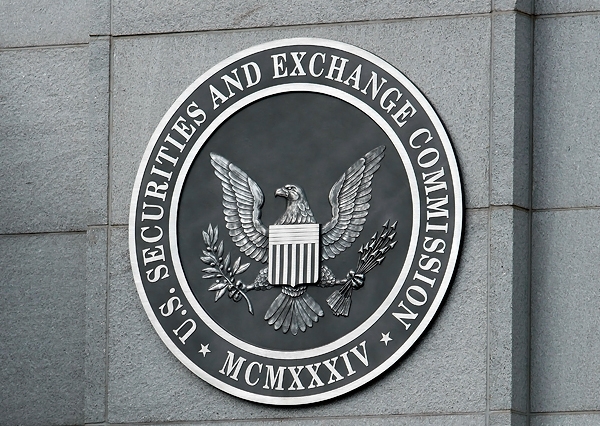Are you looking to raise capital? Below are the different types of securities offerings that can help you determine the capital raise scenario that fits best for your needs.
Before proceeding, it’s important to know that companies conducting a securities offering must comply with both federal and state securities laws. These laws enacted in the early 1930’s, while they may seem draconian by today’s standards, are intended to protect investors while providing a mechanism for capital formation and economic growth.
There are basically two types of securities: equity and debt.
Equity securities
An equity offering is typically conducted when a company sells common stock that conveys a portion of ownership interest to a security holder, in exchange for investment capital. Stockholders can receive dividends if declared, vote on corporate matters, and receive information about the company, including financial statements.
Debt securities
A debt offering usually consists of instruments, such as a bond, notes, or debentures that convey a commitment from the issuer to payback an interest payment and principle over time, in exchange for investment capital. The conveyed instrument will have a specified interest rate, maturity date and repayment amount.
Regulation A
An exemption from the registration requirements mandated by the Securities Act, applicable to small public offerings of securities that do not exceed $5 million in any 12-month period. A company that uses the Regulation A exemption for a securities offering must still file an offering statement with the Securities and Exchange Commission on Form 1-A.
Offerings share many characteristics with registered offerings. For example, purchasers must be provided with an offering circular similar to a prospectus. Just as in registered offerings, the securities can be offered publicly, using general solicitation and advertising, and purchasers do not receive “restricted securities.”
Highlights:
- Financial statements are simpler and do not need to be audited unless audited financial statements are otherwise available
- Issuers do not incur either Exchange Act reporting obligations after the offering until the company has more than $10 million in assets and more than 500 shareholders or Sarbanes-Oxley Act obligations apply only to SEC reporting companies unless the company meets the thresholds that trigger Exchange Act registration
- Companies may choose among three formats to prepare to offer circular, one of which is a simplified question-and-answer document; and
- Companies may “test the waters” to determine market interest in their securities before going through the expense of filing with the SEC
- $5,000,000 raise limit in any 12-month period
Regulation A-Plus
Extend the exemption to issuances of up to $50 million in any 12-month period, while at the same time increasing investor protection for so-called “Tier 2” offerings in four important ways:
- First, by enhancing disclosure requirements, and by requiring companies to include audited financial statements in their offering circulars
- Second, by ensuring that the Commission staff has an opportunity to review and comment on the offering circular before it becomes effective
- Third, by limiting the number of securities that a potential investor may invest to 10% of the investor’s annual income or net worth, whichever is greater; and
- Fourth, by requiring companies that issue a class of securities under Regulation A-plus to file ongoing disclosure reports, so long as the securities are held of record by at least 300 investors
Highlights:
- Eliminate blue sky law
- Increase raise limit from $5MM to $50MM
- General solicitation allowed so long as sales are to only accredited investors
- No restriction on resale of securities
Regulation D – Rule 504
Sometimes referred to as the “seed capital” exemption, 504 provides an exemption for the offer and sale of up to $1,000,000 of securities in a 12-month period. Your company may use this exemption so long as it is not a blank check company and is not subject to Exchange Act reporting requirements. In general, you may not use general solicitation or advertising to market the securities, and purchasers generally receive “restricted securities.” Purchasers of restricted securities may not sell them without SEC registration or use another exemption. Investors should be informed that they may not be able to sell securities of a non-reporting company for at least a year without the issuer registering the transaction with the SEC.
Your company may, however, use the Rule 504 exemption for a public offering of its securities with general solicitation and advertising, and investors will receive non-restricted securities, under one of the following circumstances:
- It sells in accordance with a state law that requires the public filing and delivery to investors of a substantive disclosure document; or
- It sells in accordance with a state law that requires registration and disclosure document delivery and also sells in a state without those requirements, so long as your company delivers to all purchasers the disclosure documents mandated by a state in which it registered; or
- It sells exclusively according to state law exemptions that permit general solicitation and advertising, so long as sales are made only to “accredited investors” (we describe the term “accredited investor” in more detail below in connection with our description of Rule 506 offerings)
Highlights:
- The offering must be registered at each state
- Raise limit of $1,000,000 in a 12-month period
- General solicitation allowed so long as sales are to only accredited investors
- While companies using the Rule 504 exemption do not have to register their securities and usually do not have to file reports with the SEC, they must file what is known as a “Form D” after they first sell their securities. Form D is a brief notice that includes the names and addresses of the company’s owners and stock promoters but contains little other information about the company
Regulation D – Rule 505
Provides an exemption for offers and sales of securities totaling up to $5 million in any 12-month period. Under this exemption, your company may sell to an unlimited number of “accredited investors” and up to 35 persons that are not accredited investors. Purchasers must buy for investment purposes only, and not for the purpose of reselling the securities. The issued securities are “restricted securities,” meaning purchasers may not resell them without registration or an applicable exemption. If your company is not an SEC reporting company, investors should be informed that they may not be able to sell securities for at least a year without the company registering the transaction with the SEC. Your company may not use general solicitation or advertising to sell the securities.
If your offering involves any purchasers that are not accredited investors, you must give these purchasers disclosure documents that generally contain the same information as those included in a registration statement for a registered offering. There are also financial statement requirements that apply to Rule 505 offerings involving purchasers that are not accredited investors. For instance, if financial statements are required, they must be audited by a certified public accountant. You must also be available to answer questions from prospective purchasers who are not accredited, investors.
You may decide what information to give to accredited investors, so long as it does not violate the antifraud prohibitions of the federal securities laws. If your company provides information to accredited investors, it must make this information available to the non-accredited investors as well.
Highlights:
- No general solicitation
- Unlimited accredited investors
- 35 non-accredited investors
- No resell of securities for at least a year
Regulation D – Rule 506
Rule 506 provides two different ways of conducting a securities offering that is exempt from registration: Rule 506(b) and Rule 506(c). Rule 506(b) is a long-standing rule. Rule 506(c) was added in 2013 to implement a statutory mandate under the JOBS Act.
Regulation D – Rule 506 (b)
Rule 506(b) is a “safe harbor” for the non-public offering exemption in Section 4(a)(2) of the Securities Act, which means it provides specific requirements that, if followed, establish that your transaction falls within the Section 4(a)(2) exemption. Rule 506 does not limit the amount of money your company can raise or the number of accredited investors it can sell securities to, but to qualify for the safe harbor, your company must:
- not use general solicitation or advertising to market the securities
- not sell securities to more than 35 non-accredited investors (unlike Rule 505, all non-accredited investors, either alone or with a purchaser representative, must meet the legal standard of having sufficient knowledge and experience in financial and business matters to be capable of evaluating the merits and risks of the prospective investment)
- give non-accredited investors specified disclosure documents that generally contain the same information as provided in registered offerings (the company is not required to provide specified disclosure documents to accredited investors, but, if it does provide information to accredited investors, it must also make this information available to the non-accredited investors as well)
- be available to answer questions from prospective purchasers who are non-accredited investors
- provide the same financial statement information as required under Rule 505
Highlights:
- No general solicitation
- No raise limit
- Unlimited accredited investor
- 35 non-accredited investor but must be sophisticated
- An issuer must be available to answer questions
Regulation D – Rule 506 (c)
Eliminate the prohibition on using general solicitation under Rule 506 where all purchasers of the securities are accredited investors and the issuer take reasonable steps to verify that the purchasers are accredited, investors.
Issuers may offer securities through means of general solicitation, provided that:
- All purchasers in the offering are accredited investors
- Issuer takes reasonable steps to verify their accredited investor status, and
- Certain other conditions in Regulation D are satisfied
Highlights:
- Advertising and general solicitation of investors is allowed
- Participating investors must be “accredited” investors per the Regulation D Rule 501 definitions
- Accredited investors must provide proof or an approved third-party verification that they meet the accredited standard for income and/or net worth
- The SEC filing process will be adjusted to include a “pre-filing” of Form D with a 15 day waiting period prior to advertising being allowed for the offering
- No raise limit









